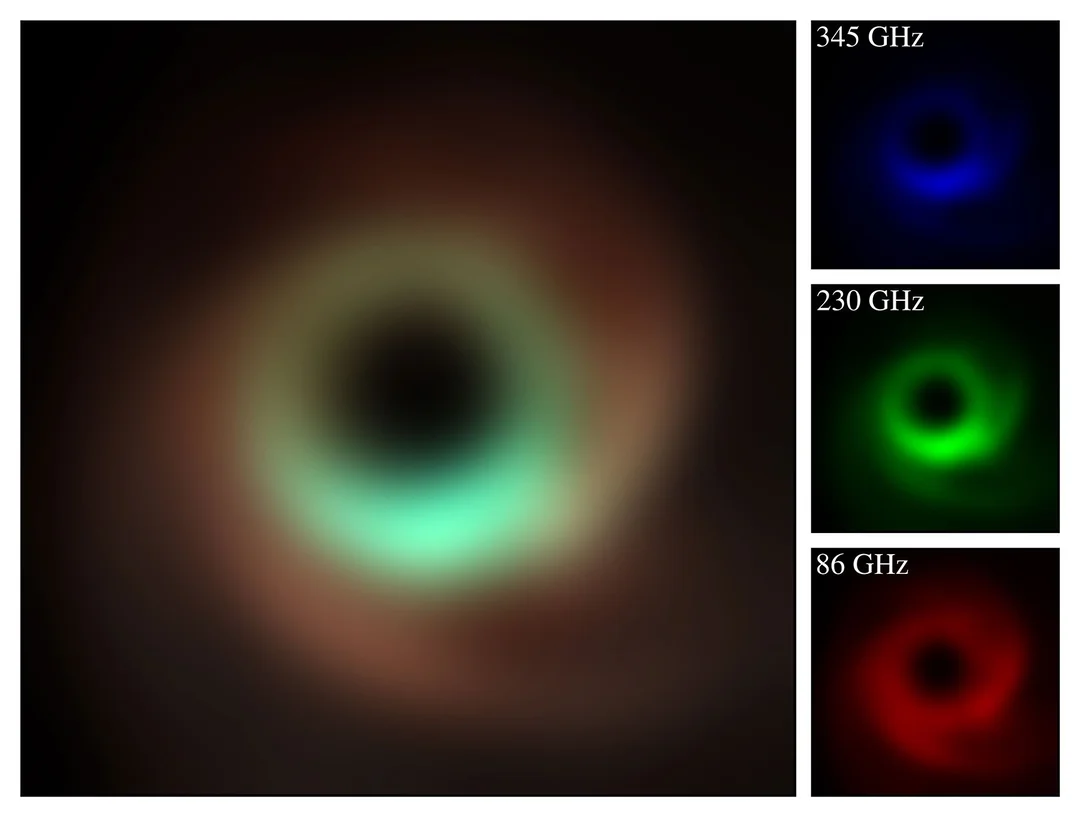
Event Horizon Telescope Set to Capture Multi-Color Black Hole Images: A New Era in Astronomy
Get ready for a cosmic spectacle! The Event Horizon Telescope (EHT) is on the verge of capturing the first-ever multi-color images of supermassive black holes, thanks to a groundbreaking new technique. This isn't just about pretty pictures; it's a giant leap in our understanding of these enigmatic cosmic giants.
For years, the EHT has been pushing the boundaries of astronomical observation, famously delivering the first image of a black hole’s shadow. Now, astronomers are taking it a step further, developing a method to observe radio waves at multiple frequencies simultaneously. This will allow them to create "color" images, providing unprecedented detail about the structure and behavior of black holes.
The Frequency Phase Transfer (FPT) breakthrough
The key to this advancement is a technique called frequency phase transfer (FPT). As detailed in The Astronomical Journal by Sara Issaoun and Dom Pesce of the Smithsonian Astrophysical Observatory, FPT corrects for atmospheric distortions that have long plagued radio telescope observations. Earth’s turbulent atmosphere scrambles radio signals, limiting exposure times and restricting observations to only the brightest objects.

FPT essentially uses observations at a 3mm wavelength to measure atmospheric disturbances and then applies that information to unscramble data at a 1mm wavelength. This means the EHT can take longer exposures, “seeing” fainter black holes and allowing for much more detailed observations.
Why is multi-color vision important?
Just as our eyes use red, green, and blue light to create color images, radio telescopes capture different frequencies, or “bands,” of radio waves. By observing the radio sky at various frequency bands, astronomers can create a composite image. However, traditional radio telescopes usually only observe one band at a time, making it difficult to capture fast-changing objects. The FPT technique allows them to capture successive images at different radio bands and correct for the distortion to create high-resolution color images.
While this method is still in its early stages, the recent FPT demonstration, involving the IRAM 30-meter telescope in Spain and the James Clerk Maxwell Telescope and Submillimeter Array in Hawaii, proves its potential. It paves the way for future projects such as the next-generation EHT (ngEHT) and the Black Hole Explorer (BHEX) to implement this technology. These advancements promise to revolutionize our understanding of black holes, allowing astronomers to study variability in accretion disks and jet formation processes with unprecedented clarity.
The future of black hole research
The implications of this advancement are massive. With longer exposures and enhanced sensitivity, astronomers will be able to study fainter black holes and observe their dynamic behavior with far greater precision. This new technique enhances the observational power of existing telescopes and unlocks new frontiers in understanding the universe’s most enigmatic objects.
What cosmic revelations do you think these multi-color black hole images will unveil? Share your thoughts in the comments below!